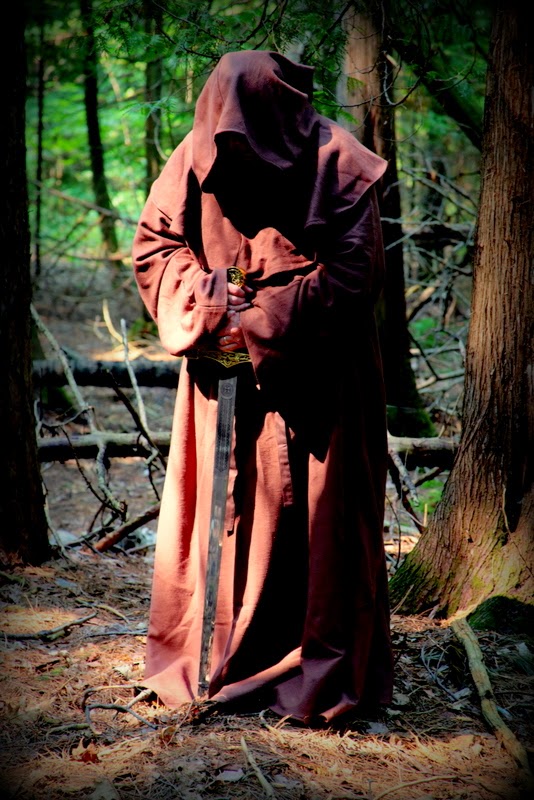Halloween’s Back Story
In my
novel The Excalibur Parchment, the Druid zealots who have global
domination ambitions, plot to overturn democracy with a horrific act of
terrorism in the heart of London. Significantly, they plan their bloody attack
around Samhein. Or, what we would call, Halloween.
 There is
a vague understanding in modern society that there is a connection between the
supernatural and Halloween. After all, we focus on ghosts, ghouls, zombies and
the like as part of our “celebration”. Me, I prefer to focus on the candies! (I
was a mean Dad. Went through all the candies my kids brought home and sifted
through, eliminating the ones they could have or not have. I admit that safety
and nutrition were not always my motivations. Sometimes I kept the best for
me!)
There is
a vague understanding in modern society that there is a connection between the
supernatural and Halloween. After all, we focus on ghosts, ghouls, zombies and
the like as part of our “celebration”. Me, I prefer to focus on the candies! (I
was a mean Dad. Went through all the candies my kids brought home and sifted
through, eliminating the ones they could have or not have. I admit that safety
and nutrition were not always my motivations. Sometimes I kept the best for
me!)
So what
was Samhein anyway? An encyclopedia of religion stated that Samhein (pronounced
so-wee, sow-wayn or saw-win) is the night Druids and Wiccans believe the
barriers between our world and the supernatural underworld are broken. That’s
why ghosts, ghouls and zombies are so prominent. It is the Druids’ Feast of the
Dead. For Wiccans and witches, it is also their ‘New Year’s’.
There
are rituals during this time to contact dead ancestors, perform ancestor
meditation, and rituals to honour the mother goddess (known as Crone) and the
god (known as the Horned One. There are even rituals to indoctrinate children
into the old religion.
Celtic
Druids were followers of those old gods. They worshipped nature—as exemplified
by the mother goddess, a forerunner of Mother Nature—and a head-spinning
variety of other gods. Historians believe that at last count the Druids revered
more than 370 gods of all kinds (though most of them are believed to be local
deities). There are about 30 gods who were spread across the pantheon of the
Celtic world. Among them were Awawn, god of the dead and the underworld;
Cerunnos, god of the underworld and The Horned One; Danu, the mother goddess of
the Tuatha De Danaan (who make an appearance in The Excalibur Parchment but
take a more prominent role in Book Two, The Lucifer Scroll); Belenos, god of
the sun and light; Ogmios, god of eloquence and communication and Taranis, god
of war and thunder.
To the
Druids of today and the followers of Wicca, Samhein is one of four focal
celebrations during the year. It is not only the feast day of the dead and a
new year, it is recognition of the fall harvest season and the beginning of
winter. Because the veil between life and death, this world and the world of
the dead, is broken during this time, it was traditional for strange things to
happen symbolizing that world breach. So, men dressed as women, farm gates were
unhinged and left in ditches, children would bang on doors and then run away
or, better yet, demand food. In other words, the precursors of today’s trick or
treating and Halloween pranks.
The dead
were honoured not as dead people, but as living spirits who were guardians and
guides to wisdom for the followers. For those who were properly and ritually
prepared it was a time when journeys could be made “to the other side”.
So
Halloween is not just a fun day filled with merriment, costumes and candy. It
has its roots deep within the pagan belief system of the Druids. It is coated
with satanic rituals, pantheistic beliefs and deviltry. Even today, a quick
internet search will unearth modern Druidry websites complete with explanations
of their beliefs and outlines of their rituals and their modern day
celebrations of Samhein around the world.
By all means, enjoy
your costumes and candy in a few weeks.
Just remember the pagan background of
the holiday.